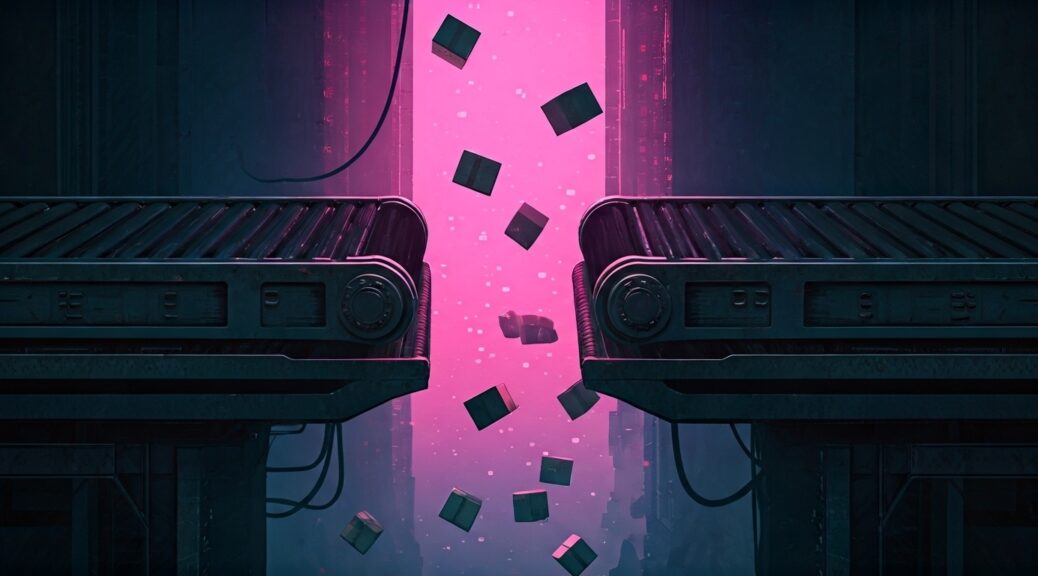Executive Summary
Many enterprises have made solid progress in digitizing internal workflows. Procurement approvals move faster, HR onboarding is more structured, and supply chain tasks are automated across departments. But when it comes to external interactions with partners, suppliers, and logistics providers, the story falls apart.
Email-based approvals, PDF documents, and static portals still dominate B2B collaboration. Teams spend hours each week manually bridging internal systems with external communications. The result is a hidden operational tax — one that slows down execution, increases errors, and undermines business agility.
The real transformation begins when internal and external workflows are unified in real time. This is the promise of Intelligent Transaction Networks (ITN). Built for seamless execution, ITN connects your teams, systems, and partners into a shared automation layer — enabling event-driven transactions to move instantly, accurately, and without manual intervention.
The Disconnect Between Internal and External Workflows
Emily, a logistics lead at a global manufacturing firm, sees the issue every day.
She checks warehouse availability in her internal system, drafts an email to a third-party logistics partner, and waits for a response. The partner sends a shipping confirmation as a PDF, which Emily then retypes into the ERP to confirm inventory allocation. Meanwhile, Finance asks her to update the invoice, only to realize that critical shipping details have already changed.
Every interaction involves delays, redundant data entry, and constant human reconciliation.
This is not a systems issue. It is a workflow problem — the result of treating internal and external processes as separate worlds. If her company used ITN, Emily would never need to send a shipping request, receive a PDF, or reconcile updated invoices. Transactions would happen in real time, across systems and stakeholders, with full visibility and no rework.
The Hidden Cost of the Internal-External Divide
Disconnected workflows are not just inconvenient. They represent real, compounding business losses:
- Shipping delays from mismatched inventory data
- Vendor disputes due to outdated pricing or order changes
- Duplicate approvals that slow down decision-making
- Operational bloat from staff manually bridging systems
Executives often assume these are minor inefficiencies. But in aggregate, they result in lost revenue, higher cost to serve, and reduced customer satisfaction.
When internal processes run on one set of systems, and B2B partners operate on another, the result is a brittle execution model. Staff are forced to act as middleware, bridging spreadsheets, emails, and portals. And every delay ripples downstream — from finance to fulfillment to the customer experience.
The Core Problem: Why Internal and External Workflows Stay Fragmented
Enterprises struggle to unify internal and B2B execution because legacy automation was never designed for it. What looks like transformation is often a patchwork of point solutions and portals.
- Departmental Automation: Most internal tools focus on single functions — HR, Finance, or Supply Chain — but ignore external partner touchpoints.
- B2B Portals: Even the best-designed portals rarely connect directly into internal workflows. Instead, they require employees to re-enter submitted data into other systems.
- Document Dependencies: Critical partner data often arrives in the form of PDFs, emails, or scanned forms. These require manual input, even after years of “digital” transformation.
The result is duplication, delay, and dependency on human intervention — all of which prevent businesses from scaling efficiently.
Bridging the Gap: ITN as the Execution Infrastructure
Intelligent Transaction Networks were built to solve this exact challenge.
Rather than treating internal automation and B2B collaboration as separate problems, ITN enables a single execution layer where structured transactions move across teams, systems, and external partners in real time. Data is captured at the source, routed intelligently, and validated instantly — without reliance on PDFs, portals, or human follow-ups.
With UBIX as the underlying engine, ITN powers:
- Shared visibility across vendors, logistics providers, and internal teams
- Real-time event processing without waiting for manual approvals
- AI-assisted validation and data transformation to ensure consistency across systems
- Incremental rollout without disrupting existing processes
Whether it’s a shipment trigger, a purchase order update, or a payment confirmation — ITN eliminates the human bridge, enabling intelligent, cross-enterprise execution.
Real Impact: The Measurable Advantage of ITN
Organizations adopting ITN-enabled automation across internal and B2B workflows report:
- 5x faster order processing cycles
- 60% reduction in invoice errors and payment disputes
- Stronger supplier and customer relationships from improved execution reliability
- Seamless collaboration between departments and external partners, without added complexity
Instead of asking employees to act as integration points, ITN lets systems talk to each other directly. Finance updates, shipment status, and inventory movements all sync automatically — freeing staff to focus on exceptions and strategic work.
Strategic Benefits: Unlocking Enterprise-Grade Synergy
For large organizations, fragmented workflows often become the biggest barrier to agility. ITN addresses this by enabling:
- Transaction-level clarity across your ecosystem — so no update goes unseen or delayed
- Resilience to market changes — because execution can be adapted dynamically in real time
- B2B-native automation — where your partners are integrated participants, not passive users of portals
- Scalable innovation — where one automated flow becomes a reusable pattern across lines of business
This is not another automation tool. It is an execution architecture for the next generation of enterprise operations — one where internal and external processes run as one.
The Future of Enterprise Execution: Eliminate the Divide
As customer expectations rise and partner ecosystems become more dynamic, the winners will be those who automate beyond their four walls. Bridging internal and external workflows is no longer optional. It is the foundation for execution excellence.
Intelligent Transaction Networks remove friction, ensure compliance, and accelerate action — not just within departments, but across your entire value chain.
Are Your Internal and External Workflows Working Together — or Working Against You?
Ask yourself:
- Do your teams still rely on email and spreadsheets to update B2B data?
- Are partners required to manually enter or upload the same information in different systems?
- How many hours are lost each month reconciling internal systems with external changes?
If your answer is yes to any of these, you are not optimizing. You are merely coping.
The shift to ITN-powered execution is already underway. The question is — will your enterprise lead or be left coordinating across inboxes?





